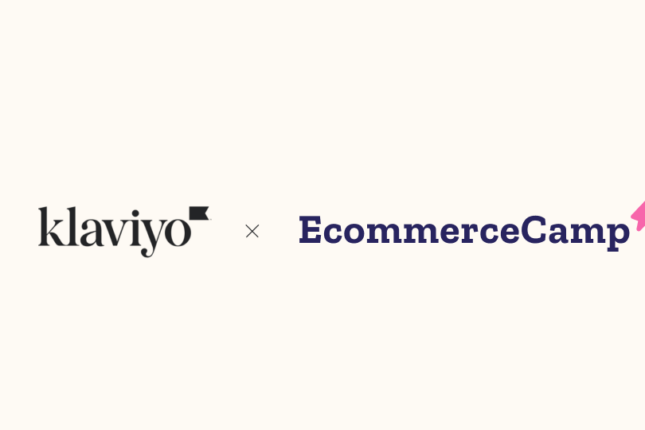Are you eager to explore new opportunities for earning extra income? If the idea of venturing into the world of online business and ecommerce intrigues you, why not give dropshipping a shot? This increasingly popular business model has opened doors for many aspiring entrepreneurs, requiring minimal initial investment.
If you’re ready to embark on a journey of entrepreneurship, dropshipping offers the perfect platform to get your business up and running with ease. So, seize the moment and explore the exciting possibilities that lie ahead!
Table of contents
- Dropshipping Business Model: What Is It?
- The Key Players: Manufacturer, Retailer, and Customer
- The Mechanics Of Dropshipping: How Does It Work?
- To Start A Dropshipping Business or Not?
- Key Advantages
- Main Challenges
- How To Start A Dropshipping Ecommerce Business?
- Step 1: Define Your Niche
- Step 2: Conduct Market Research
- Step 3: Select Dropshipping Partner
- Step 4: Design The Brand Identity
- Step 5: Launch Your Online Store
- Step 6: Register Your Dropshipping Business Legally
- Step 7: Organise Your Dropshipping Business Finances
- Extra Step: Enhance Professionalism On Your Online Store
- Step 8: Unleash Powerful Marketing Strategies
- Step 9: Continuously Optimise for Success
- What To Avoid When Starting A Dropshipping Business?
- Wrapping Up Your Journey into Dropshipping
- FAQs
1. Dropshipping Business Model: What is It?
Imagine a business model that allows you to run an online store without ever needing to handle inventory. Enter dropshipping, a game-changing ecommerce approach that enables you to sell products to customers without keeping physical stock.
How does it work?
The Key Players: Manufacturer, Retailer, and Customer
At the heart of the dropshipping business model lie three essential players: the Manufacturer, the Retailer (also known as the Dropshipper), and the Customer. Understanding their roles and interactions is crucial to grasp how dropshipping operates seamlessly.
- The Manufacturer/Supplier:The manufacturer is the entity responsible for creating the products offered in the dropshipping arrangement. They hold the inventory and manage the production process. In a traditional retail model, manufacturers would supply products to retailers in bulk, who would then handle storage, packaging, and shipping to customers. However, in dropshipping, the manufacturer takes on a more direct role in the shipping process.
- The Retailer/Seller (Dropshipper): The retailer, or dropshipper, is you—the entrepreneur running the dropshipping business. As the retailer, you curate a selection of products from various manufacturers to sell on your online store. Unlike traditional retailers, you don’t purchase products in advance or hold any inventory. Instead, you showcase the manufacturer’s products on your website, set the prices, and manage customer inquiries and orders.
- The Customer: The customer is the end recipient of the products sold by the retailer. When a customer places an order on the retailer’s online store, the retailer, in turn, forwards the order details to the manufacturer. The manufacturer then ships the products directly to the customer’s address, cutting out the need for the retailer to handle physical inventory or shipping.
- The Manufacturer/Supplier:The manufacturer is the entity responsible for creating the products offered in the dropshipping arrangement. They hold the inventory and manage the production process. In a traditional retail model, manufacturers would supply products to retailers in bulk, who would then handle storage, packaging, and shipping to customers. However, in dropshipping, the manufacturer takes on a more direct role in the shipping process.
The Mechanics Of Dropshipping: How Does It Work?
Well, at its core, dropshipping offers a unique approach to retail where, instead of managing your own inventory and shipping products directly to customers, you team up with a dropshipping partner, also known as a wholesaler or supplier. The seller acts as an intermediary between customers and suppliers.
Here’s how the magic of dropshipping unfolds:
- Customer Purchase: When a customer makes a purchase from a dropshipper, they pay the retail price set by the online store.
- Order Forwarding: The dropshipper then forwards the order to the supplier. Based on their agreement, the dropshipper pays the supplier the wholesale price and retains the profit margin. For instance, if the customer pays $100 for a product and the wholesale price is $70, the dropshipper keeps $30 as profit.
- Seamless Fulfillment: The supplier takes charge of processing the order and directly ships the product to the customer.
In case of any delivery or quality concerns, customers can easily contact the dropshipper, who acts as the bridge and takes responsibility for relaying the issues to the supplier.
Dropshipper’s main responsibility is to drive sales and create a seamless customer experience. The absence of inventory overhead expenses makes it a relatively easy and cost-effective business to launch.
Thus, dropshipping offers a modern and efficient way to run an online store, opening up a world of opportunities for aspiring entrepreneurs.
2. To Start a Dropshipping Business or Not?
Key Advantages
This business model has several key advantages that contribute to its allure:
- Low-Risk Venture with Minimal Startup Costs: Dropshipping is renowned for its low entry barrier, making it an ideal choice for those with limited financial resources. Unlike traditional retail, there’s no need to purchase inventory upfront, reducing the financial risk for entrepreneurs.
- Inventory Management: With dropshipping, you don’t need to worry about storage space, stock levels, or dealing with unsold products, making it a highly flexible and scalable business model.
- Wide Product Range: Dropshipping allows you to offer a vast array of products without physically stocking them. This means you can quickly expand your product offerings and cater to diverse customer preferences.
- Global Reach: Operating in the digital realm, dropshipping enables you to reach customers worldwide without the need for physical stores or international shipping logistics.
- Testing New Products: Dropshipping allows you to test new product ideas with minimal risk. If a product doesn’t perform well, you can quickly switch to different offerings without incurring significant losses.
- Scalability: Dropshipping offers the advantage of scalability, allowing you to expand your product range and reach more customers without the constraints of managing physical inventory. A scalable business can lead to increased profits over time.
- Reduced Operational Complexity: With the supplier responsible for fulfillment and shipping, you can focus on core business aspects like marketing, customer service, and growing your online presence.
- The Virtues of Independence: Since there’s no need to handle physical inventory or manage a warehouse, entrepreneurs can operate their businesses from anywhere with an internet connection. This freedom of location provides the flexibility to work remotely, travel, and manage the business on their own terms.
Main Challenges
However, like any business model, dropshipping also has its challenges:
- Competitive Landscape: The ease of entry into the dropshipping market has led to increased competition. Differentiating your brand and attracting customers in a crowded space can be a demanding task.
- Supplier Dependence: Your business’s success relies heavily on the reliability and efficiency of your suppliers. Poor supplier performance can lead to delayed shipments and dissatisfied customers.
- Profit Margins: While dropshipping offers potential for profitable margins, competitive pricing and additional expenses like shipping costs can impact your overall profitability.
NOTE:
– Product Pricing: As a retailer, setting the right product prices is crucial for profitability. You must consider the product cost from the manufacturer, shipping fees, and your desired profit margin while remaining competitive in the market.– Supplier Costs: Establishing a good working relationship with reliable suppliers is vital. Some manufacturers may charge higher wholesale prices or shipping fees, affecting your profit margins. Negotiating better terms or exploring multiple suppliers can impact your overall profitability positively.
- Customer Service: As the face of the business, providing exceptional customer service becomes crucial. Ensuring timely responses to customer inquiries and handling returns efficiently is vital for building trust and loyalty.
Final Thoughts
As you embark on your dropshipping journey, remember that success requires continuous learning, adaptability, and a strong focus on customer satisfaction. By providing value, embracing innovation, and staying customer-centric, you can create a thriving dropshipping business that stands out in the competitive e-commerce market.
Need specific, targeted advice for your store?
Whether you’re embarking on your first steps into the world of e-commerce or already running an established business, don’t hesitate to contact us. Our dedicated team is here to provide unwavering support and assistance throughout your entire journey.







